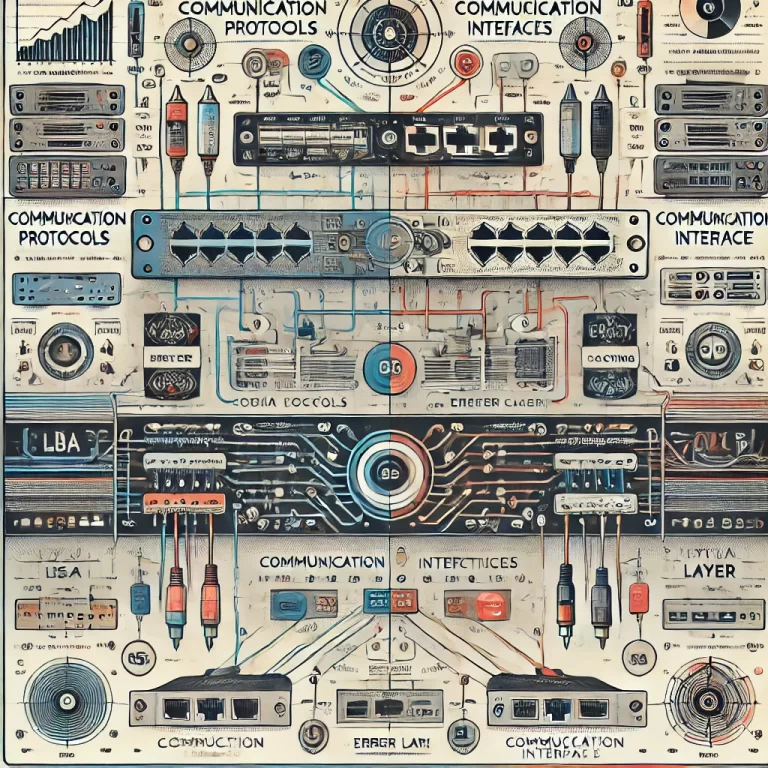In the realm of communication systems, the terms communication protocol and communication interface are often used interchangeably, leading to confusion. However, these terms refer to two distinct yet interrelated concepts. Understanding their differences is crucial for designing and implementing effective communication systems. This article explores each term in detail and highlights their differences and relationships.

What is a Communication Protocol?
A communication protocol is a set of predefined rules and conventions that govern how data is transmitted between two or more entities in a communication system. Protocols ensure that data is exchanged correctly, reliably, and efficiently, even between systems with different hardware or software configurations.
Key Features of Communication Protocols
- Data Format Specification: Protocols define the structure of the data being transmitted, including headers, payloads, and error-checking information.
- Transmission Rules: They specify the order in which data is sent and received, ensuring synchronization between communicating devices.
- Error Handling: Protocols include mechanisms for error detection, correction, and retransmission to ensure data integrity.
- Compatibility: By standardizing communication rules, protocols enable interoperability between devices from different manufacturers.
Examples of Communication Protocols
- Application Layer Protocols: HTTP (used for web communication), FTP (used for file transfers), SMTP (used for email exchange).
- Transport Layer Protocols: TCP (provides reliable, connection-oriented communication), UDP (provides faster, connectionless communication).
- Network Layer Protocols: IP (responsible for routing packets across networks).
Protocols operate at various layers of the communication stack (e.g., the OSI model), primarily focusing on the logical aspects of communication.

What is a Communication Interface?
A communication interface, on the other hand, refers to the physical or logical point of connection between two devices or systems. It provides the medium through which data is exchanged and specifies the electrical, mechanical, or logical aspects of the connection.
Key Features of Communication Interfaces
- Physical Connectivity: Interfaces define how devices are physically connected, including connectors, cables, and ports.
- Signal Standards: They specify the electrical or optical signals used for communication, such as voltage levels, frequencies, and timing.
- Data Transmission Pathway: Interfaces provide the channel through which data moves from one device to another.
Examples of Communication Interfaces
- Hardware Interfaces:
- USB (Universal Serial Bus): A widely used interface for connecting peripherals.
- HDMI (High-Definition Multimedia Interface): For transmitting high-definition video and audio signals.
- RS-232: A standard for serial communication.
- Software Interfaces:
- APIs (Application Programming Interfaces): Logical interfaces that allow software components to communicate.
- Driver Interfaces: Bridge the gap between software applications and hardware devices.
Interfaces often operate at the physical or data link layers of the communication stack, emphasizing the physical and electrical aspects of communication.

Key Differences Between Communication Protocols and Communication Interfaces
| Aspect | Communication Protocol | Communication Interface |
|---|---|---|
| Definition | Rules for data transmission and interpretation | The physical or logical connection point |
| Focus | Data format, timing, error handling | Signal standards, physical connectivity |
| Primary Layer | Logical layers (e.g., transport, application) | Physical and data link layers |
| Purpose | Ensures reliable and interpretable communication | Enables physical data transfer |
| Examples | TCP/IP, HTTP, FTP | USB, HDMI, RS-232 |

How Do Protocols and Interfaces Work Together?
Communication protocols and interfaces complement each other in a communication system. A protocol relies on an interface to provide the physical medium for data transmission, while an interface requires a protocol to define the meaning and structure of the data it carries.
Example: Ethernet Communication
- Interface: Ethernet hardware provides the physical connection between devices, including cables, ports, and network cards. It also specifies the electrical signals used for communication.
- Protocol: The TCP/IP protocol suite operates on top of the Ethernet interface to manage data transmission, error handling, and packet routing.
The interface facilitates the physical transfer of data, while the protocol ensures that the data is understandable and usable.

Conclusion
While communication protocols and communication interfaces serve different purposes, they are both indispensable in a communication system. Protocols define the logical rules for data exchange, ensuring reliability and compatibility, whereas interfaces provide the physical or logical means to transfer data. Together, they form the foundation of modern communication technologies, enabling seamless interaction between devices and systems. Understanding these distinctions can help in the design and troubleshooting of communication systems.
